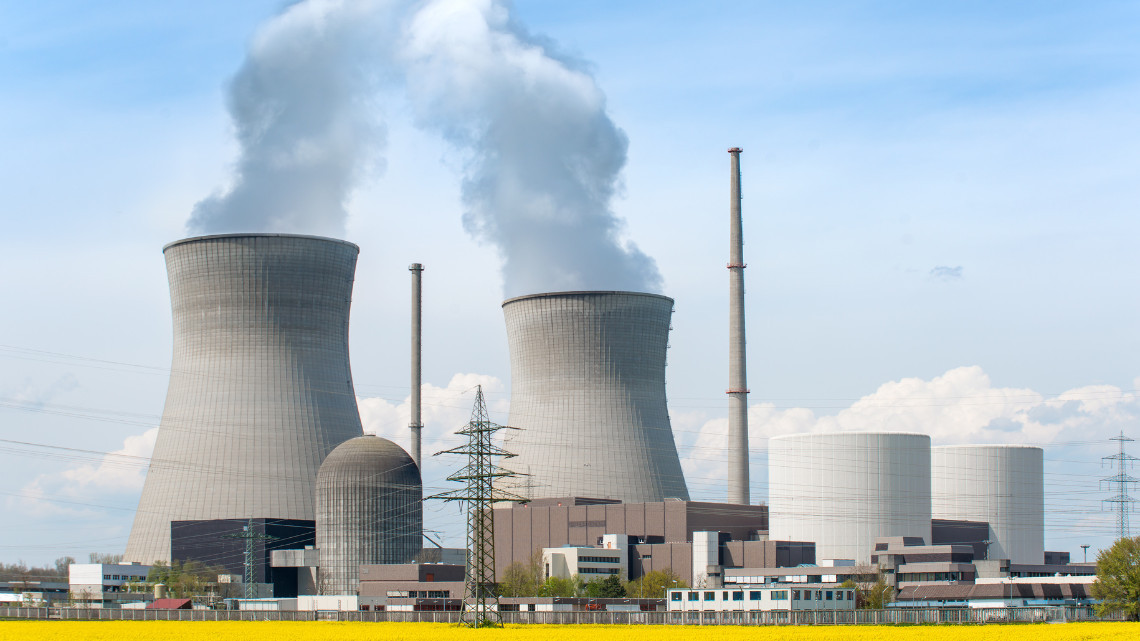
(COVERT TOWNSHIP) – U.S. Energy Secretary Jennifer Granholm announced the federal government would give a $1.5 billion loan to Holtec International to restart a decommissioned nuclear plant near Lake Michigan within two years.
The 800-megawatt reactor would be the first nuclear reactor to be resurrected from decommissioned status in U.S. history. Holtec Palisades Plant Manager Jeff Borah said it would take at least 18 months to get operators licensed through the Nuclear Regulatory Commission and there were many upgrades that needed to be made to the current facility, which would include two extra reactors.
“Palisades is coming back,” Gov. Gretchen Whitmer said. “Thanks to an effective collaboration between the Biden-Harris Administration, the Michigan Legislature, and Holtec, work will begin shortly to restart operations at Palisades.”
Whitmer said the restart would be a base for her 100 percent clean energy plan by 2040. The Legislature previously put $150 million toward restarting the power plant and Holtec has asked for $300 million from the state to make it happen after the plant was sold to Holtec and turned off in 2022.
The restarted power plant would also house two 300-megawatt modular nuclear reactors. The main reactor was expected to produce power until 2051, which is a year after President Joe Biden’s net-zero emission goal.
“We are very interested in small modular reactors, as well,” Granholm said.
The announcement was made Wednesday during a visit to the Palisades Nuclear Power plant, where Granholm and Whitmer were shown a mock shutdown of a reactor.
Borah said Holtec has invested $200 million into the site and they had 19 operators who were in the program to get re-licensed. They were also hiring more for classes that would start this summer.
“Most of the rest of the project is maintenance and infrastructure upgrades, things that are going to guarantee the reliability of this plant beyond what it was,” he said.
He said there is contingency funding to go beyond the 18-month timeline.
“But we have no doubt that we can get this done,” Borah said.
He said Holtec would be working with the Nuclear Regulatory Commission to reestablish the emergency plan that is required for all nuclear plants across the country.
Two nuclear power protesters were removed from the crowded warehouse before the speech and remained at the entrance of the Palisades site.
“We understand the concern especially with spent nuclear fuel, which is what many of the concerns are about, but this is safe,” Granholm said.
Beyond Nuclear Radioactive Waste Specialist Kevin Kamps said the protesters were local neighbors from the Palisades Park Country Club, who have fought the nuclear power plant since it was first opened in 1971.
Kamps said Beyond Nuclear would continue to promote protests as they have since the Nuclear Free Great Lakes Action camps that brought people from all over the country.
“We do plan to continue to protest nonviolently with direct action,” Kamps said.
He said one form they would be attempting would be to try to reverse a “paperwork shuffle” that was happening with the NRC.
“This should be treated like a brand-new reactor license application. Every requirement of a brand-new reactor should be required of this 51-year-old Palisades ‘zombie’ reactor, but the NRC is not treating it that way. They’re treating it as a mere paperwork shuffle, and we’re going to resist it at every twist and turn,” he said.
He rejected the argument that using nuclear energy would be a sensible source for providing the power required for a carbon-free and renewable 100 percent energy makeup.
“Nuclear power is neither clean nor safe. I mean if you look at the uranium fuel chain from start to finish, it is far from clean,” Kamps said.
Kamps said the $1.5 billion and possible $300 million from the state was only “the tip of the iceberg” when it came to the amount of funding needed to restart the Palisades plant. He said he didn’t see Holtec starting the reactor in 18 months.
“I think Energy Secretary Granholm, Gov. Whitmer, the NRC, and Holtec are making this up as they go,” he said.
Kamps said the real number was going to be around $15.7 billion, which would mostly come from the federal government. The money included $7.4 billion loan guarantees associated with the two small reactors.
Kamps said there was a cautionary tale associated with the development of the small modular reactors and pointed to a company called NuScale out of Idaho that went bankrupt trying to produce a modular reactor. Wired reported the Department of Energy was due to sink $1.4 billion into the plant over 10 years before the project ended up being scrapped because they wouldn’t be able to find enough power companies to purchase the power.
Holtec has made a deal with Wolverine Power and Indiana-based Hoosier Energy to purchase the power from the restarted nuclear plant.
Many other state and federal politicians weighed in on restarting Palisades.
U.S. Rep. Bill Huizenga (R-Zeeland) said he was proud to be part of the bipartisan effort to help get the project across the finish line.
“Today’s announcement is a massive step towards restoring 800 megawatts of carbon-free energy generation and hundreds of highly skilled jobs right here in Michigan’s Fourth Congressional District,” Huizenga said.
Senate Minority Leader Aric Nesbitt (R-Lawton) said while the nuclear power plant being slated to be brought back online was a “big win” for Southwest Michigan, it ultimately pointed out the flaw in the 100% clean energy plan from Whitmer and the Democrats.
“Michigan families need dependable power sources like Palisades to help alleviate energy prices and provide electricity when the sun doesn’t shine and the wind doesn’t blow,” Nesbit said.
Article courtesy MIRS News for SBAM’s Lansing Watchdog newsletter
Click here for more News & Resources.